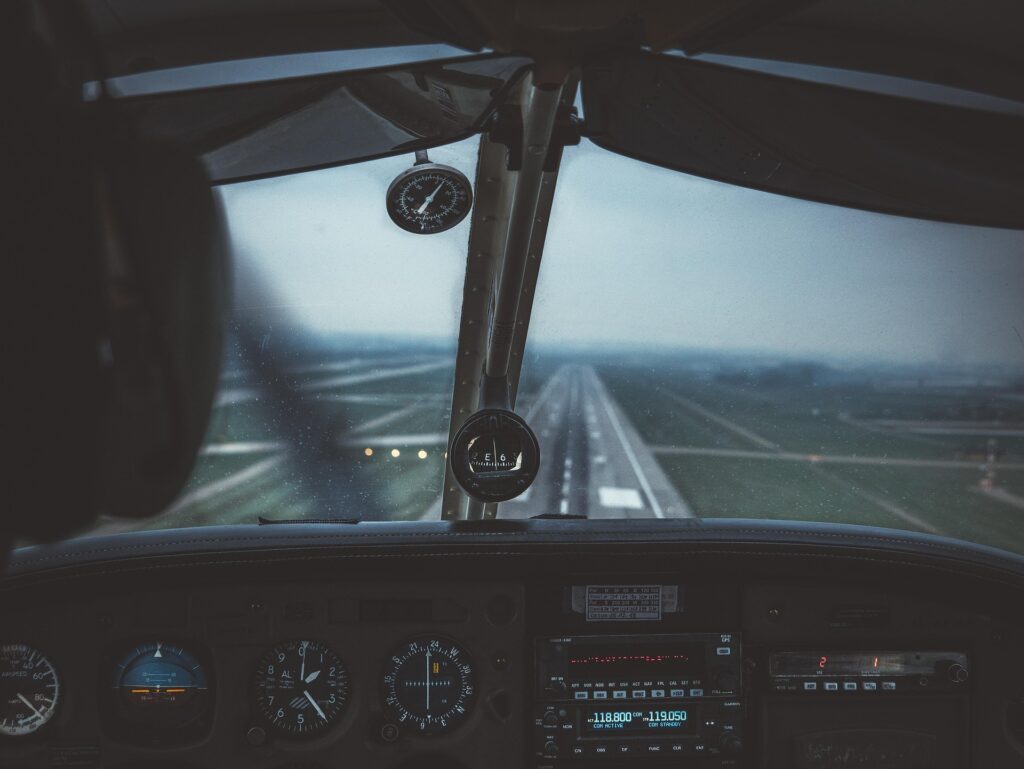Global Avionics Round-Up from Aircraft Value News (AVN)

In the bustling airspace above the United States, thousands of aircraft cross invisible paths each day, relying on a combination of technology, regulations, and human judgment to avoid catastrophe.
One Air Traffic Control (ATC) principle, known as “see and avoid,” is as old as powered flight itself. It instructs pilots to visually scan for other aircraft and maneuver accordingly to prevent mid-air collisions. The problem is that this practice, still relied upon in certain segments of American aviation, is not just outdated. It is dangerously inadequate in a modern, crowded, and complex airspace system.
The controversy surrounding see and avoid erupted once again in January following a fatal mid-air collision in the skies above Washington, DC. A military Black Hawk helicopter and a civilian aircraft collided in what investigators now describe as a breakdown in communication, awareness, and system coordination.
Both aircraft were operating under Visual Flight Rules (VFR), and both were, technically, obeying the guidelines of see and avoid. The tragedy raises a brutal question: is this guidance, enshrined by the Federal Aviation Administration (FAA) and still deeply embedded in American aviation culture, fundamentally flawed?
To answer that, we must first look at the regulatory and structural deficiencies of the FAA and the broader U.S. ATC system. The U.S. has long prided itself on having the largest and most advanced aviation infrastructure in the world. But behind this reputation is a system plagued by chronic underfunding, outdated technology, and bureaucratic inertia.
While other countries have moved swiftly to privatize and modernize air traffic control operations, the U.S. ATC system remains tethered to mid-20th-century hardware and software, much of it unable to keep pace with today’s volume of air traffic.
This dysfunction creates pressure points throughout the system. One of them is the increased reliance on visual navigation protocols, particularly in uncontrolled airspace or during periods when radar coverage is limited.
Instead of mandating onboard collision-avoidance technologies across the board or enforcing stricter ATC oversight in more flight corridors, the FAA has effectively allowed pilots to “see and avoid” their way out of trouble. In other words, the safety of modern flight is being offloaded onto the human eye — a biological sensor with built-in limitations, particularly in conditions of glare, fatigue, and high closing speeds.
This isn’t just theoretical concern. Data from the National Transportation Safety Board (NTSB) reveals that mid-air collisions are not rare flukes. They tend to cluster around busy airspace, especially in training zones, military-civilian shared airspace, and around uncontrolled airports. The Black Hawk incident in DC is emblematic of a larger systemic vulnerability. It occurred in one of the most monitored and restricted zones in American airspace. If a failure could happen there, it can happen anywhere.
Avionics rises to the challenge…
The avionics industry has not been blind to these issues. In fact, the inadequacy of see and avoid has become a rallying point for manufacturers and engineers designing the next generation of safety systems.
Modern Traffic Collision Avoidance Systems (TCAS), which provide pilots with real-time warnings and evasive instructions, have been a major step forward. But they are not universally required in all aircraft categories, especially among general aviation aircraft. This patchwork adoption leaves too many aircraft outside the digital safety net.
Emerging technologies promise to revolutionize this landscape. Automatic Dependent Surveillance–Broadcast (ADS-B), now required in most controlled airspace in the U.S., allows aircraft to broadcast their GPS-derived position to ATC and nearby aircraft. It’s a powerful tool for increasing situational awareness, but like TCAS, its impact is limited by uneven uptake and lack of integration into all cockpits.
More futuristic, and potentially transformative, are vision-based synthetic awareness systems and artificial intelligence (AI)-powered copilot aids. These systems combine computer vision, machine learning, and high-resolution sensors to detect and track nearby aircraft, even in visual or radar dead zones.
Think of them as digital eyes that never blink, fatigue, or get distracted. Several startups and defense contractors are already testing these systems for both civil and military use, often in tandem with augmented reality displays that place traffic information directly in the pilot’s field of view.
But even these advancements are hamstrung by regulatory bottlenecks. The FAA, notoriously cautious and slow to approve new technologies, has not kept pace with the development cycles of the private sector. Avionics companies face years-long approval processes to get new safety features certified and often must compromise designs to fit legacy regulatory frameworks that still assume “see and avoid” is the default fallback mechanism.
There’s a clear irony here. At a time when self-driving cars are achieving remarkable success in avoiding collisions on crowded city streets, we are still trusting human eyeballs to prevent 400-knot metal machines from occupying the same point in the sky. This is not just an operational gap. It’s a philosophical failure in aviation oversight.
The FAA’s own charter emphasizes the prevention of accidents, not just the post-mortem investigation of them. Yet the Black Hawk disaster, and others like it, reveal a system that responds to tragedy, rather than acting decisively to prevent it.
“See and avoid” may have made sense when barnstormers ruled the skies, but today, it is a relic, a romantic but perilous vestige of a simpler time. In the age of AI, automation, and autonomous flight, relying on visual lookout as the cornerstone of mid-air safety is no longer acceptable. The next Black Hawk crash may already be in motion, its gears turning in a regulatory system too slow to see what’s coming — and too dysfunctional to avoid it.
This article originally appeared in our partner publication, Aircraft Value News.
John Persinos is the editor-in-chief of Aircraft Value News.